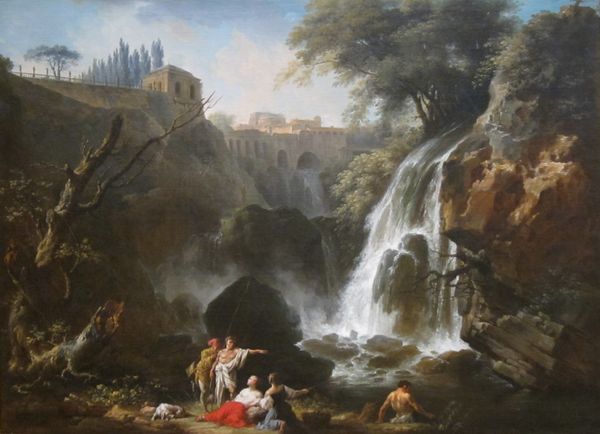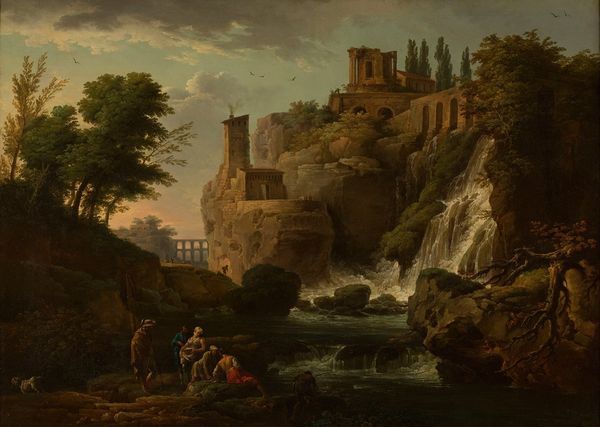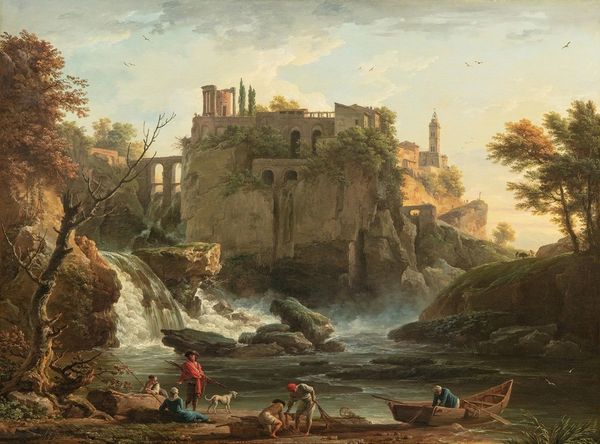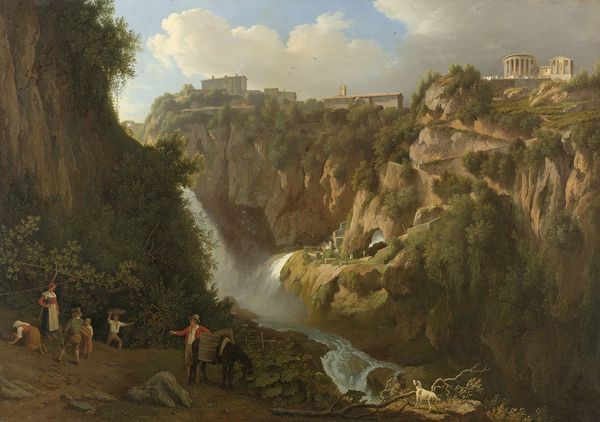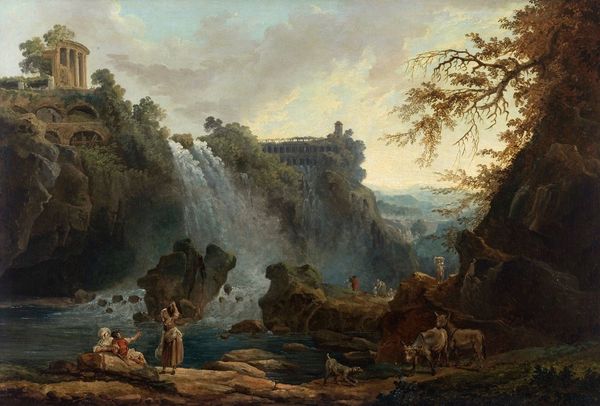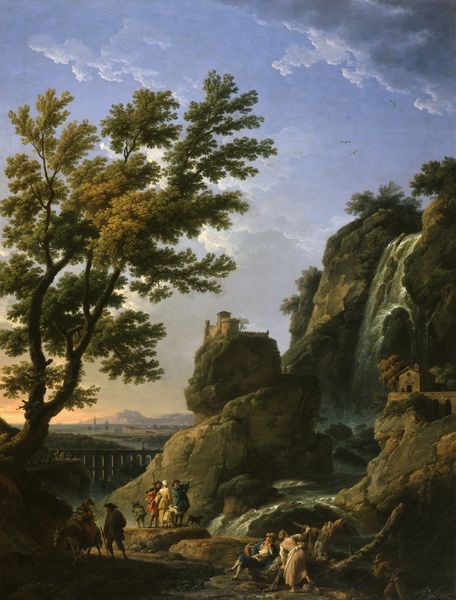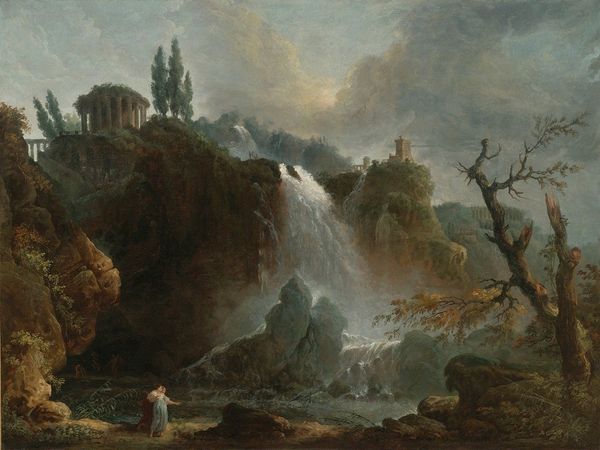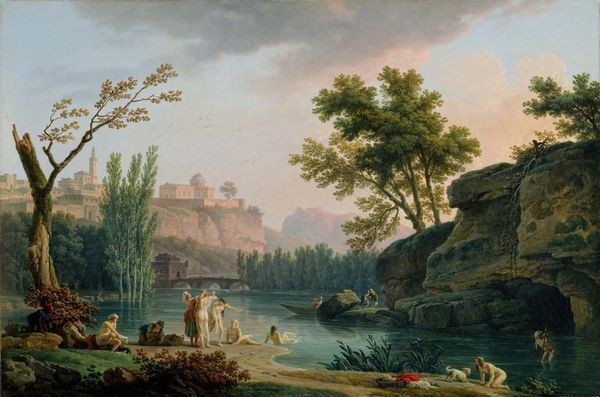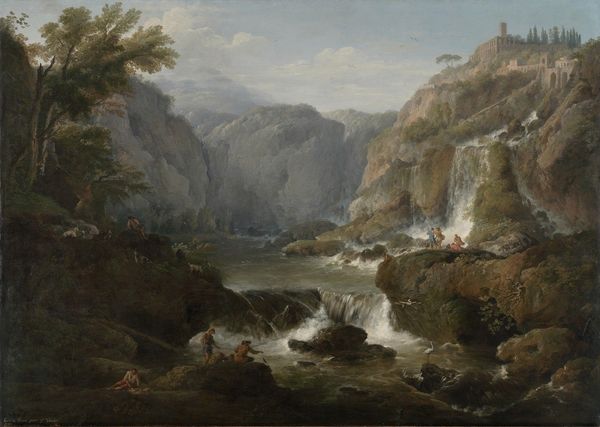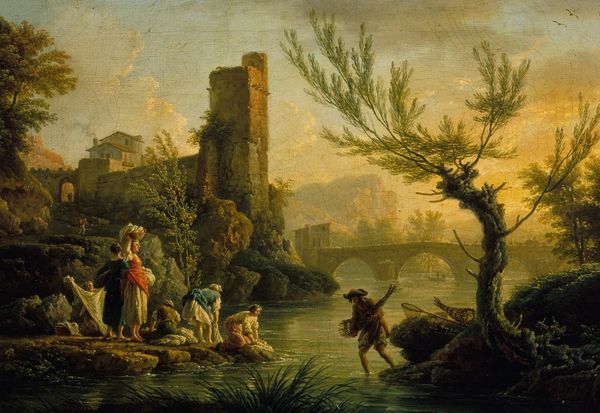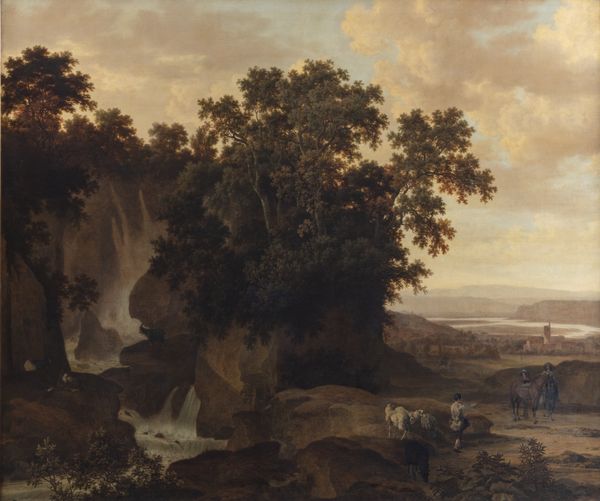
Copyright: Public Domain: Artvee
Claude-Joseph Vernet captured the Cascade at Tivoli with oil on canvas, drawing on a rich tradition of landscape painting. Here, the cascade is more than just a natural feature; it’s a symbol deeply embedded in cultural memory. The cascade itself, in its dynamic flow, evokes the Heraclitean flux—a world in constant change. We see echoes of this motif in Renaissance fountains and Baroque garden designs, where water symbolizes life's ceaseless movement and purification. In Tivoli, the cascading waters contrast with the stoic ruins, embodying a dialogue between the eternal and the ephemeral. Consider the emotional impact: the sublime terror and awe inspired by nature's power, a sentiment mirrored in Romantic-era depictions of untamed landscapes. This emotional resonance is not new; it's an echo of ancient rituals where water was both revered and feared, reflecting our subconscious anxieties about the uncontrollable forces of nature. The cyclical progression of water mirrors the cyclical nature of human experience, forever resurfacing in our art and psyche.
Comments
No comments
Be the first to comment and join the conversation on the ultimate creative platform.
